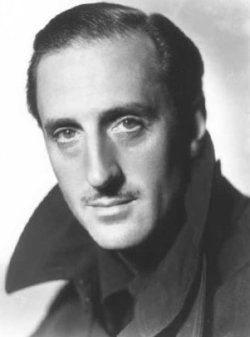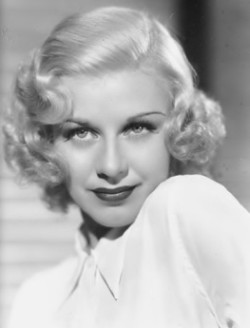An autistic speedster (Ezra Miller), the mighty bro-dude who has some unimportant water powers (Jason Momoa), a bland self-doubting millionaire (Ben Affleck) with his sharp-tongued servant (Jeremy Irons), a magic tech man (Ray Fisher), and Wonder Woman (Gal Gadot) must band together to battle a giant CGI guy who is after three “destroy the world” MacGuffin boxes. Alone they are not enough, so they need to resurrect the lovable boy scout (Henry Cavill).
Well, it’s better than Batman v Superman: Dawn of Justice. It’s much better. It’s not good, but it is better. BvS was created by an artist—a terrible, terrible artist. Justice League appears to have been made by an artistically-devoid, amateur committee. BvS attempted to say stupid things it shouldn’t have and did so poorly. Justice League doesn’t say anything at all. BvS is passionately hated by those with taste and passionately defended by those with no taste (it’s not clear if they love it, only that they are defending it). Justice League is not a film to elicit passion in anyone.
The troubled production of Justice League is well known. For anyone who has missed the last few years, this is the fifth film in the DC Extended Universe. Man of Steel was a critical mess as was Suicide Squad. BvS was despised by many, including me, and underperformed at the box office by at least 200 million dollars. Wonder Woman was a critical and financial hit, but it had a very different tone from the others. Justice League started as two films and then it was reduced to one. The studio pushed for a change in direction once they saw the swamp crud that was BvS, and again when Wonder Woman hit the right notes. Director Zack Snyder had to step away due to a personal tragedy, so Joss Whedon stepped in for reshoots that added up to a quarter of the movie and yet another change in direction. The studio (smartly) demanded an under two hour runtime, even though Snyder’s material required two and half to three hours. And Henry Cavill had grown a mustache for his role in the next Mission Impossible film and was not allowed to shave it, so his face needed to be CGI’d in the reshoots. All of that is visible in the finished product. It looks like it was edited by a high school AV club, but under the circumstances, perhaps no one could have put the pieces together successfully. For the first two-thirds, it is less of a coherent film, and more just a series of scenes plopped one after the other with no flow. The tone shifts from scene to scene and sometimes in a single scene. The messages of Man of Steel and BvS are ignored or contradicted and continuity is in shambles. Yes, Superman did die in the earlier film, but now he was always loved by all—a beacon of hope to the world. He’d been happy and comfortable as a hero and Wonder Woman knew him well. (Oh, and remember Bruce Wayne’s future dream of the parademons? The filmmakers don’t.) Well, I can’t argue with ignoring BvS.
It is harder to explain why the CGI is so poor. Cavill’s face looks weird from time to time, but that’s nowhere as distracting as the horrible work in the fight scenes where the actors are clearly replaced by cartoons. And every time Steppenwolf appears I was ripped out of the film. He is the worst superhero film villain in conception and execution in the last thirty years, and that’s including Apocalypse, Malekith, and the Enchantress. He has no personality, no back-story, and no motivation, and looks worse than Parallax from Green Lantern. I could defend such shoddy work in a SyFy channel movie, but this project cost 250-350 million dollars. Where did it go? Yeah, I’m sure it cost big bucks to recolor the film from dark and dreary to cheesy, plus that whole mustache thing apparently cost enough to feed a small city for a year, but there’s still a good $100 million lost somewhere.
We get very little character development, no arcs, and not nearly enough material to care about any of these heroes. The actors do the best they can. Gal Godot continues to be the MVP and is still charismatic, which is a trick considering her part is underwritten with an unnecessary faux-feud with Batman. Affleck manages a mildly amusing Batman (do we want an amusing Batman?) but I swear I saw him looking for the exits to the franchise. I’ve seen worse Batmen. The others don’t come off as well. Miller is comic relief, and I can see how, with better direction, he might have been funny, but his jokes don’t land. And I’m pretty certain that every single line he had was an attempted-joke. Momoa’s bro-dude shtick should have been entertaining or annoying, but it doesn’t have the energy to be either, and I’m afraid I’ve lost any enthusiasm for the upcoming Aquaman film. Fisher is just tech-magic guy. He doesn’t do anything and it looks like he had a character arc that was cut. Cavill…well…he’s more complicated. His take on Superman (call it Snyder’s take) has been terrible. And when he is in scenes clearly shot by Snyder, he keeps his scowl. But the later Whedon shots are another matter. The acting isn’t stunning, but Cavill can be fun when he smiles and his rendition of the boy scout Superman in the later parts of the film is pretty good (And no, at this point, Superman being in the film is not a spoiler).
The plot isn’t much of anything, but with some good character interaction, a solid villain, and some nice fights, the slight plot would have served well enough. But as is, it is another hole in the film. Nothing has weight. Nothing matters. which is another reason the fights don’t work. The CGI is bad and combat is just jumping around, but it is the lack of and weight to the plot and characters that makes the fights nothing but pointless dances.
The closest comparison I can think of is the original 1967 Casio Royale that fell apart in production and a film-of-sorts was constructed from the pieces as best they could. And like that film, there’s some fun moments and some pleasant quips in Justice League, but the whole doesn’t work. It never had a chance. They had some kind of garbage pile, so they constructed a film not to be good, but to avoid being a disaster. So, win one for Warner Bros. It isn’t a disaster, and that should be its tag line.


 An actor with both one of the most distinctive profiles and most distinctive voices in Hollywood, Basil Rathbone became identified with Sherlock Holmes to his dismay. He should have taken more joy in the connection as few of his other lead roles have been remembered. He was in a large number of classic films, but, except for
An actor with both one of the most distinctive profiles and most distinctive voices in Hollywood, Basil Rathbone became identified with Sherlock Holmes to his dismay. He should have taken more joy in the connection as few of his other lead roles have been remembered. He was in a large number of classic films, but, except for  Ginger Rogers will forever be known as the dancing partner of Fred Astaire; they fit together. Together they made some of the greatest film musicals of all time. She could manage the steps, as well as both the sophisticated and common attitudes needed for the comedy and romance. Astaire danced with others who were technically better, but no one who was such a perfect partner. Apart from Astaire she strove to have a “serious” career (after a group of “let’s put on a Broadway show” films) that led to a string of turgid melodramas that she could never pull off—not that anyone could have made Kitty Foyle watchable. Her best “solo” works were comedies.
Ginger Rogers will forever be known as the dancing partner of Fred Astaire; they fit together. Together they made some of the greatest film musicals of all time. She could manage the steps, as well as both the sophisticated and common attitudes needed for the comedy and romance. Astaire danced with others who were technically better, but no one who was such a perfect partner. Apart from Astaire she strove to have a “serious” career (after a group of “let’s put on a Broadway show” films) that led to a string of turgid melodramas that she could never pull off—not that anyone could have made Kitty Foyle watchable. Her best “solo” works were comedies.